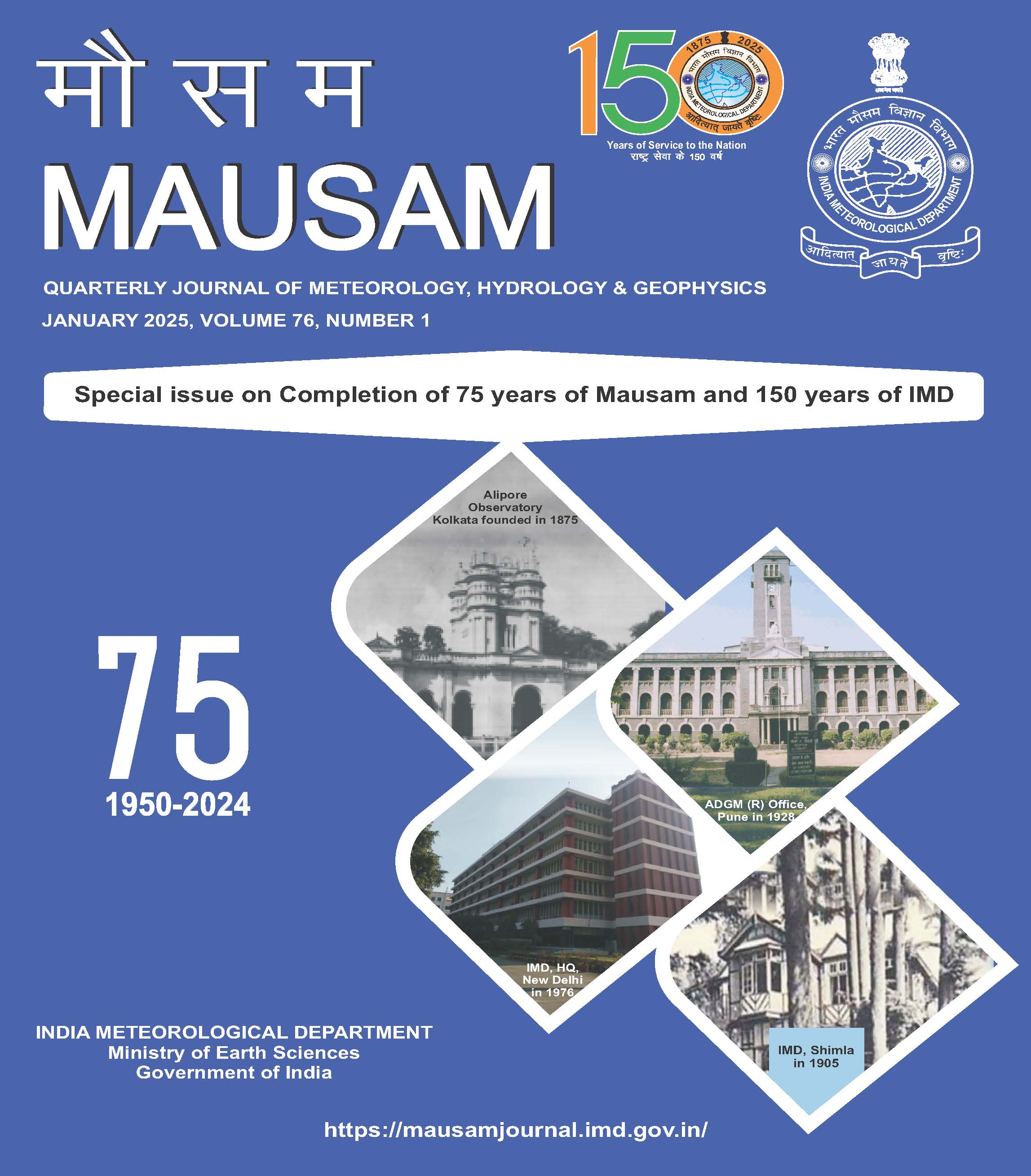Evolution of satellite meteorology and its future scope- India’s perspective
DOI:
https://doi.org/10.54302/mausam.v76i1.6433Abstract
During last six decades satellite-based systems have evolved into a very powerful tool for observing earth and its atmosphere. Their prodigious areal coverage combined with capability of very frequent observations over a given area makes them ideal platform for a wide variety of vital observations of atmosphere and the processes that manifest into weather phenomenon on the earth. Developmental efforts initiated in the early stage at NASA, USA have culminated into availability of sophisticated instruments of various types which measure radiation in different spectral ranges of the electromagnetic spectrum. Using appropriate Electro-Optical systems with scanning capabilities on board satellites, large areas of the earth can be viewed. Such measurements can be converted to pictures of earth’s cloud cover as well as profiles of temperature and humidity on a global basis using a system of satellites in different orbits. Such unique capabilities of satellites have enabled weather forecasters to make a realistic assessment of the present state of the atmosphere with a three-dimensional perspective. When combined with more frequent observations, evolution of weather systems at various spatial and temporal scales can be seen with a high precision. Satellite systems have therefore revolutionized the science of weather forecasting. As a result of all these developments the weather forecasting services all over the world have improved considerably, particularly during the last two decades. Data and products generated from number of satellites are also assimilated in the NWP based models to generate forecast charts for operational use by weather forecasters. There is a positive impact of assimilating satellite products in the model based forecast charts. Particularly, data from two sensors AMSU-A and IR based Hyperspectral sounders on polar satellites, are found to have large impact as compared to all other types of sensors. INSAT series of Indian Geostationary satellites started from early 1980s, have made significant contributions to the weather forecasting services of India Meteorological Department. Like some of the currently operational Geostationary meteorological satellites of the other countries, future generations of INSAT satellites are also planned to be equipped with advanced payloads like multi-spectral imagers, lightning imagers and IR based Hyperspectral sounders.
Downloads
Published
How to Cite
Issue
Section
License
Copyright (c) 2025 MAUSAM

This work is licensed under a Creative Commons Attribution-NonCommercial 4.0 International License.
All articles published by MAUSAM are licensed under the Creative Commons Attribution 4.0 International License. This permits anyone.
Anyone is free:
- To Share - to copy, distribute and transmit the work
- To Remix - to adapt the work.
Under the following conditions:
- Share - copy and redistribute the material in any medium or format
- Adapt - remix, transform, and build upon the material for any purpose, even
commercially.



